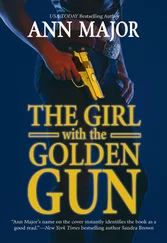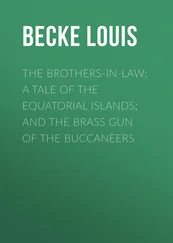Ledbetter and Motes had installed air-conditioning in the RPB offices and had wired S.W. Daniel’s corporate headquarters. The Daniels suggested that their two visitors diversify into the business of making the outer tubes for silencers. S.W. Daniel would make the interior parts. The two companies would advertise in the same gun publications and travel to the same gun shows. By selling only parts, both would stay on the right side of federal laws requiring registration of completed silencers. Indeed, no law barred the sale of silencer parts. In the eyes of the law, however, any consumer who accepted delivery of both internal parts and tubes would automatically possess a completed silencer—regardless of whether he put them together to produce a working silencer or not. If the consumer had not first acquired the ATF approval and tax stamp necessary to own a silencer, he would be guilty of a felony. But again, as far as S.W. Daniel was concerned, that was the consumer’s worry.
Wayne Daniel went so far as to give Ledbetter and Motes a measuring gauge to guide them in fashioning the tubes, according to government affidavits. He also allowed them to use S.W. Daniel’s slogan, “Silence is golden,” which the Daniels had used to sell a line of completed silencers through Shotgun News , a thick tabloid containing only firearms advertising. Ledbetter and Motes founded L&M Guns and likewise began selling their tubes through Shotgun News and at gun shows around the country. The Daniels, meanwhile, began advertising their internal-parts kits and displaying them at the same gun shows. On at least one occasion, according to a statement by Ledbetter, the two companies found themselves facing each other across an aisle.
Details of this arrangement emerged in February 1984, when ATF agents received a tip from the sheriff’s department in Mono County, California, that its officers had discovered silencers while searching the home of a Bridgeport, California, man named Frank Wedertz. Wedertz, who had not registered his silencers, told ATF he had bought them from a licensed gun dealer in Tehachapi, California. ATF agents then searched the dealer’s home and found records indicating he had bought the components from L&M Guns and S.W. Daniel, had assembled the silencers, and then sold them. The dealer said he had seen ads for the parts in Shotgun News and had been able to assemble the completed silencers in minutes.
The investigation began gaining momentum. On April 27, 1984, ATF special agent Peter Urrea, posing as the president of the Widow Makers Motorcycle Club, telephoned L&M Guns. He first told the company’s order taker that he had received kits containing the internal parts for a silencer from S.W. Daniel, then asked whether or not the parts would fit the L&M tubes. The operator assured him the S.W. Daniel parts would indeed fit. Urrea ordered three tubes. He also ordered machine-gun flats from S.W. Daniel and L&M.
On April 30, Agent Urrea called S.W. Daniel and ordered three sets of internal parts for silencers, one kit containing the operating mechanisms of an S.W. Daniel nine-millimeter machine gun, and one the frame flat. He expressed concern about the kinds of records S.W. Daniel kept, explaining that he was concerned because he had a criminal record. The company assured him it only kept shipping invoices.
Urrea also ordered a machine-gun flat from L&M Guns and persuaded Travis Motes to bend the frame for him. Motes mailed the shaped frame to Urrea. In the process, according to ATF documents, Motes violated provisions of the Gun Control Act of 1968 prohibiting any company from manufacturing a lower receiver without an ATF license. ATF charged, moreover, that by mailing the frame to California, moreover, Motes violated the act’s provisions against shipping firearms across state lines directly to consumers. (Companies can sell guns to out-of-state residents by mail but must ship them first to a licensed dealer in the buyer’s home state.) Urrea also asked Motes whether he could provide twenty-five more machine-gun kits with already-shaped flats so that he could make twenty-five machine guns and sell them to friends in South America. Motes said he might be able to accommodate him.
Urrea continued buying silencer parts and machine-gun kits from S.W. Daniel, L&M, and a third company, La Vista Armaments of Louisville, Kentucky, gradually building enough evidence to convince a federal judge to grant search warrants to allow ATF agents to search the companies. On July 19, 1984, ATF agents raided L&M and S.W. Daniel, seizing firearms, firearm parts, and, most important, customer lists and shipping records. Urrea and a colleague spent a month examining these records and found that in California alone some twenty-four consumers had received all the components necessary to build a silencer—and thus possessed the equivalent of completed silencers—but none had bothered to register the device.
The bureau used the seized records to launch some four hundred individual criminal investigations relating to arms trafficking and illegal possession of restricted weapons. In June 1985, ATF agents arrested Sylvia and Wayne and, using an experimental tactic, charged them with conspiracy to sell illegal silencers. (By now Sylvia and Wayne had divorced but continued a close working relationship.) In formal court arguments, they claimed they were simply trying to fill a valid need for replacement parts for silencers owned by legitimate users.
The ATF investigators found a rather different story.
All in all from November 1983 to July 1984, the government charged, S.W. Daniel had mailed six thousand silencer kits and machine-gun kits. Only four buyers had bothered to register the devices. When ATF checked the customer lists through the FBI’s National Crime Information Center, it found that more than fifty customers had prior criminal records or were believed to be involved in drug peddling and other forms of organized crime. Posing as IRA gunrunners, Mexican narcotics smugglers, and assorted ne’er-do-wells, undercover ATF agents were welcomed by international arms traffickers, narcotics smugglers, and assorted ne’er-do-wells.
An ATF agent posing as a member of the Irish Republican Army ordered $15.6 million of silencer-equipped machine guns, hand grenades, and rocket-propelled grenades from a group of New York arms traffickers who, according to Treasury documents, illegally manufactured and sold firearms and explosives to countries forbidden by U.S. law from receiving domestically produced weapons. A Treasury case report noted that the leaders of the group “were dealing directly with Sylvia and Wayne Daniel… for the purchase of the machine guns and silencer kits, which were then sold to the ATF undercover agent.” The leaders were convicted of violating federal firearms laws.
Agents also arrested an Oregon man who sold machine-gun lower receivers to the Neo-Nazi Order, the group whose members assassinated Alan Berg in Denver and allegedly murdered a Missouri state trooper. After his initial arrest, the man bragged to friends that ATF had failed to find his real stash of weapons hidden underneath his water bed. A tipster leaked the secret to ATF. Agents returned to the man’s house, drained the bed, and found two S.W. Daniel machine guns and five silencers, all made from kits.
Another investigation captured a Texas man after he sold seven S.W. Daniel machine guns, with silencers, to an ATF undercover agent who had posed as a Houston narcotics dealer. The suspect had received forty-four silencer kits from S.W. Daniel and twenty-five tubes from L&M Guns.
In Ohio, agents arrested a convicted felon named Joe Canatelli, who had also sold machine guns and silencers to an ATF undercover agent. Canatelli had purchased silencer tubes and internal components directly from L&M and S.W. Daniel, and from a federally licensed firearms dealer in Youngstown, Ohio, who had agreed to order the silencer kits and machine-gun kits for Canatelli. The dealer, in a formal affidavit, stated that Canatelli “had previously told me that you can make a buck by putting the kits together, and that he knew some guys that wanted to buy some M11s with silencers for the mob. He further explained that they ‘would be used only once for hits.’” Agents seized three machine guns made from “flats,” and three silencers. Canatelli and an associate were convicted and sentenced to prison.
Читать дальше
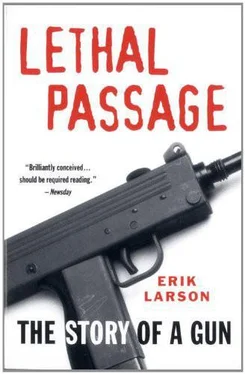
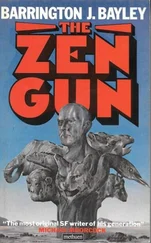


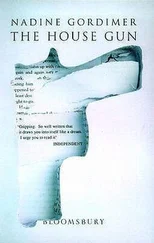

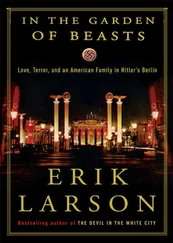

![Ричард Деминг - Whistle Past the Graveyard [= Give the Girl a Gun]](/books/412176/richard-deming-whistle-past-the-graveyard-give-t-thumb.webp)
